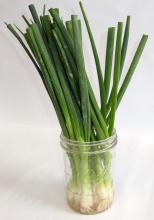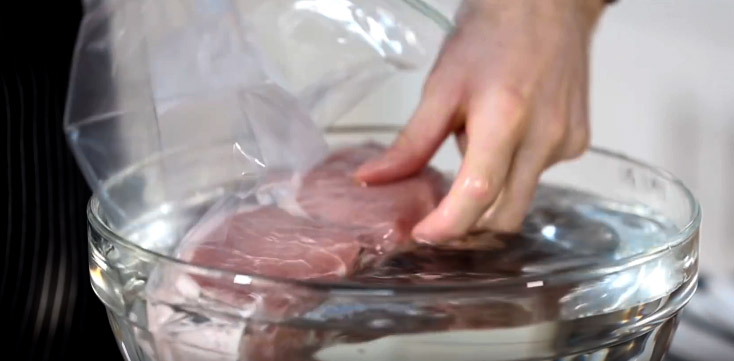Our Friends president and chief experimental cook had an epiphany the other day, and she shared it with us.
Irresistible piles of asparagus at the market made me remember cold winter days when I could dip into the asparagus stash in the freezer and make our favorite soup -A Simple Asparagus Soup (101 Cookbooks). (Editor’s note: You can enjoy her favorite soup too! Click here for the recipe.) With asparagus blanched, we plugged in the Food Saver machine to discover it had no life. A little Google time and we uncovered this neat trick to remove air from bags.
I’ll share that video in a moment, but the notion of properly storing “excess” food to give you more time to consume it sort of veered our discussion into a truly significant food issue: food waste.
But first, the video:
Having recently thrown out some soup bones and other bits for stock-making that were heavily freezer-burned when life got too hectic, you can bet I’m going to use this tip for better storage!
Proper freezer storage is the least of my problems, though, and maybe yours as well. As a seller at the market, I often witness cases of market “lust,” where the urge to pick up some of every tantalizing product leaves the shopper with more product than they can hope to use in a week.
Even without the seductive allure of market goodies, we Americans tend to waste a lot of food. We visited http://www.worldfooddayusa.org/food_waste_the_facts and discovered:
- In the USA, organic waste is the second highest component of landfills, which are the largest source of methane emissions
- In the USA, 30-40% of the food supply is wasted, equaling more than 20 pounds of food per person per month
There are some worldwide statistics that are equally disheartening, but let’s stick close to home. Friends wants to do its share by digging up more facts, finding useful websites and providing strategies and recipes to help us all reduce the amount of food we waste. That’s a task that’ll take more than one post to cover properly, but by the time we’re done, we should all be putting more of our market purchases into our stomachs and less into landfills.
Since we started this post talking about proper storage techniques, let’s move on in that vein. We found the website of a Minnesota non-profit, Eureka Recycling, that is bursting with information. Click right here to visit a pages devoted to proper storage techniques.
 They’ve got a ton of ’em, sorted by product. To tantalize you, I thought that this green onion suggestion would be perfect, as everybody’s got alliums at the market already. They have a few tips for green onions, but this one is not so obvious, but useful for a lot of products that tend to spoil quickly:
They’ve got a ton of ’em, sorted by product. To tantalize you, I thought that this green onion suggestion would be perfect, as everybody’s got alliums at the market already. They have a few tips for green onions, but this one is not so obvious, but useful for a lot of products that tend to spoil quickly:
Store in the fridge wrapped in a damp towel or upright in a glass of water just to cover the white parts.
So in essence, treat your scallions like a living plant and they’ll stay better, longer!
Here’s another great idea we found in several places:make a “use it up” spot in your refrigerator. Those almost-wilting greens, that last bit of cheese…it can be easier to use them up if they are more visible! Create a reminder box to collect the things that need eating up soon, so you and others in your household know what to reach for to make a meal or find a snack.
This space will become your source for making fantastic rice bowls, omelettes and perhaps even a “Use-it-up” egg salad. Vikki tried it out, and cleaned out some market eggs, radishes, asparagus and herbs. It came out pretty delicious, she said. Here it is: We’ll keep hunting for the best advice on combating the scourge of food waste and we hope it’ll lead to less waste of food AND money for anyone willing to make the effort.
We’ll keep hunting for the best advice on combating the scourge of food waste and we hope it’ll lead to less waste of food AND money for anyone willing to make the effort.




